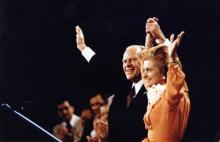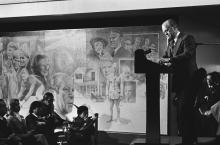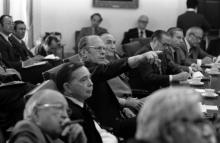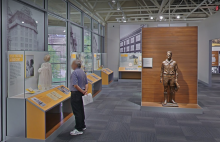

1976 Presidential Election
Online
The American nation had never faced a presidential election quite like the one in 1976. Gerald Ford, the incumbent, had assumed the presidency in 1974 and had not previously campaigned for the office. This opened the door for fellow Republican Ronald Reagan to challenge Ford's nomination, the first time since 1912 that a sitting Republican president had faced a primary challenge. After a hard-fought primary campaign, Ford eventually won the Republican nomination. However, polls showed Ford trailing his Democratic opponent, Jimmy Carter.

Growing Up Grand: The Early Years of Gerald R. Ford and Early 20th Century Grand Rapids
Online
On the evening of Monday, November 1, 1976, Air Force One, dubbed The Spirit of ’76 in this the nation’s Bicentennial year, touched down at Kent County Airport.Following a hard day of campaigning in Ohio and Detroit, the President of the United States and the First Lady had returned home to cast their votes the next day in an election that would decide whether he would continue serving as President for the next four years. As recently as three years before, it was an election neither had contemplated.

SS Mayaguez: Leadership in Crisis
Online
Presidential leadership is often defined by decisions made during a crisis, showcasing a President’s personal character, resolve, fortitude, and strength. President Ford faced such a crisis in May 1975, during what he later called one of the “tensest moments” of his Presidency.


The Watergate Files
Online
When Judge John Sirica gaveled the trial of the Watergate seven to order on January 8, 1973, federal investigators had already discovered a covert slush fund used to underwrite nefarious activities against Democrats. The money and the men on trial could be linked to the Committee to Re-elect the President (CRP) at whose head sat the former Attorney General of the United States, and President Nixon’s former law partner, John Mitchell. At the trial, E. Howard Hunt, who had planned the break-in, and four of the burglars pleaded guilty. G. Gordon Liddy, who helped in the planning, and James McCord, the other burglar, refused to cooperate, were convicted of various charges, and sentenced to prison.